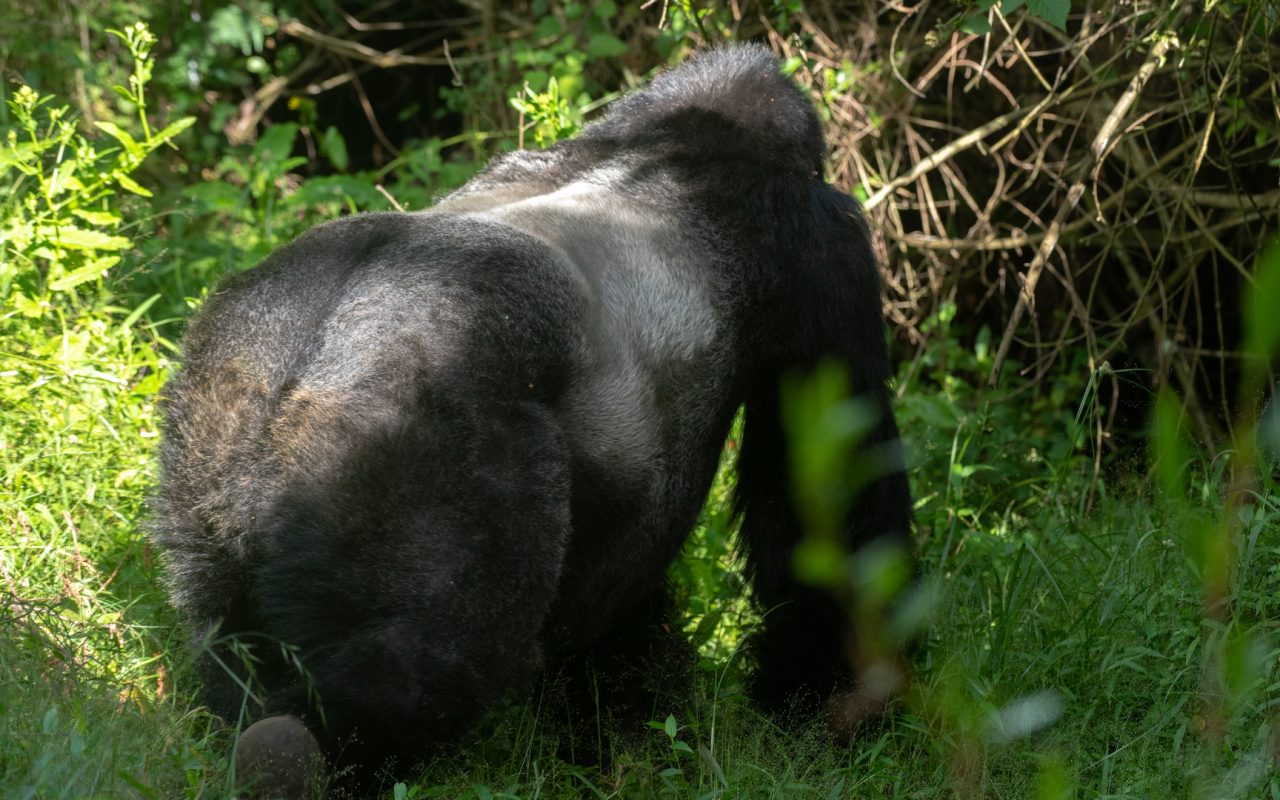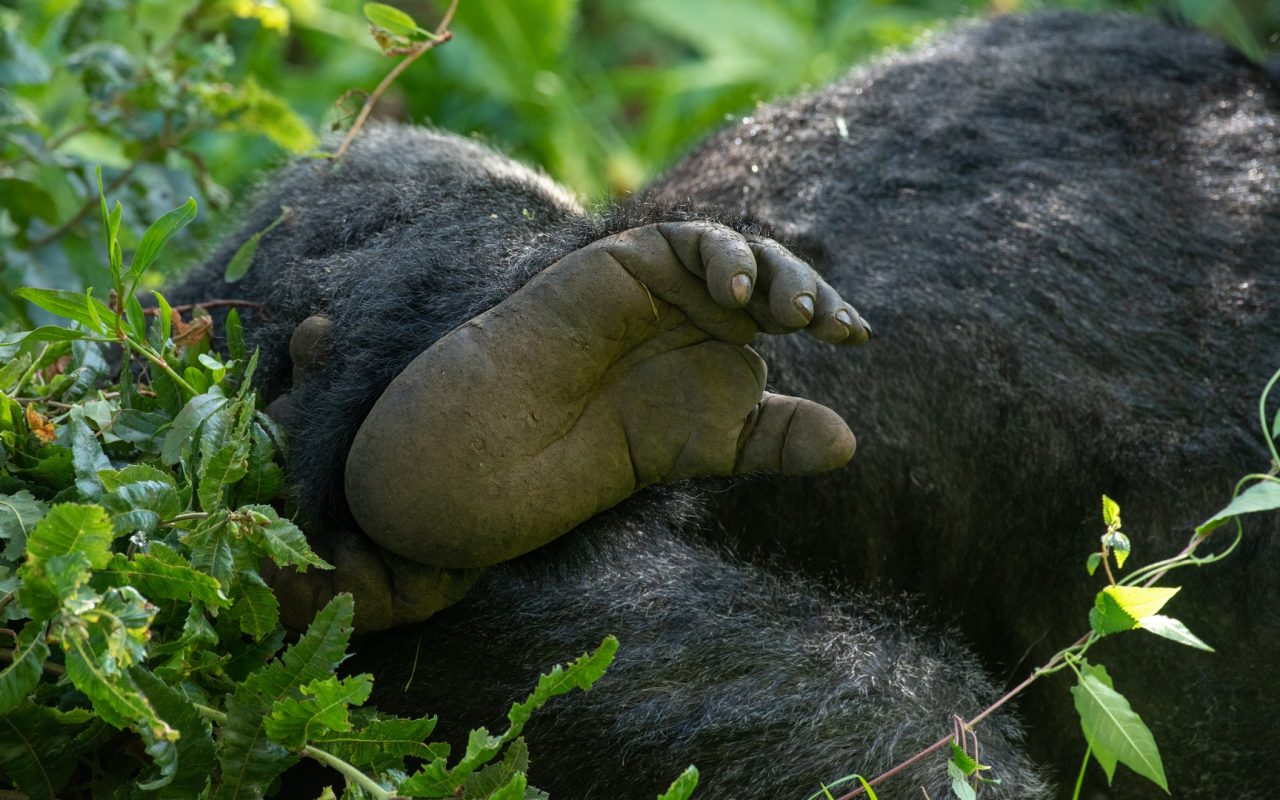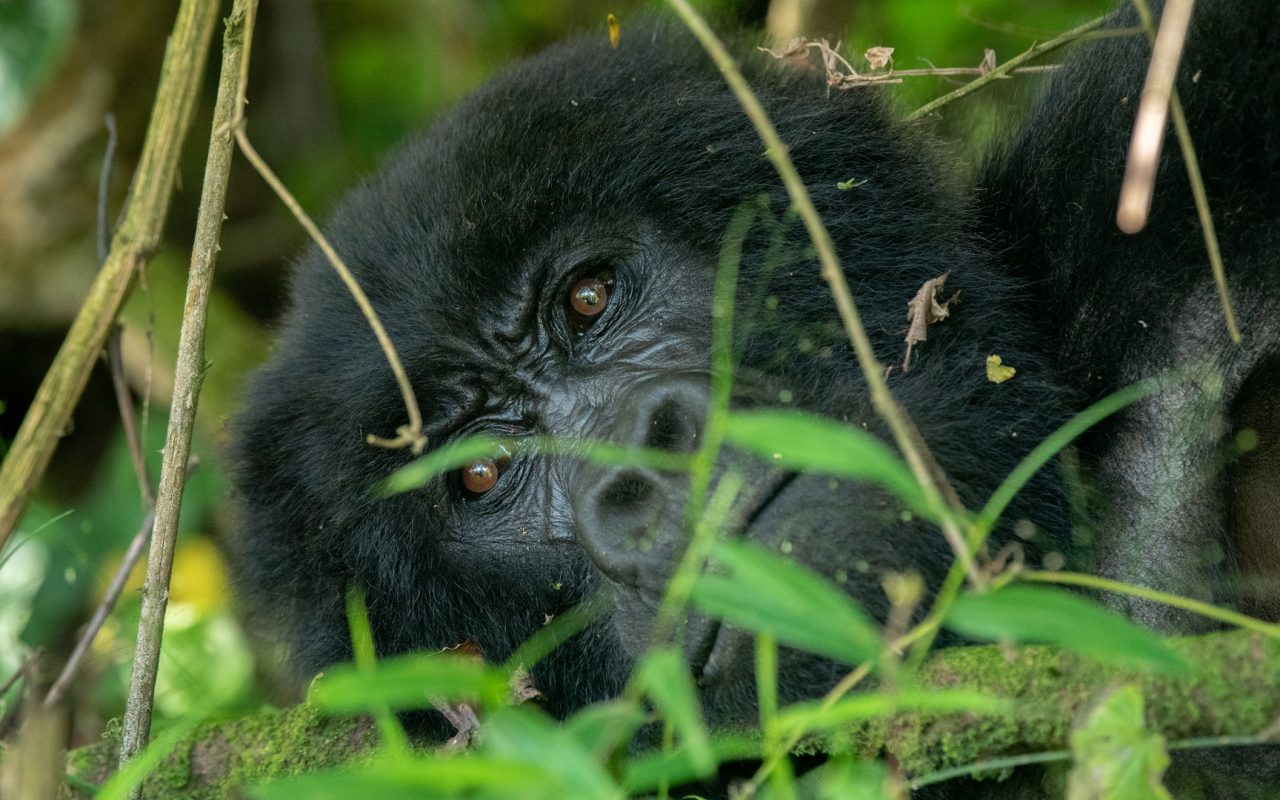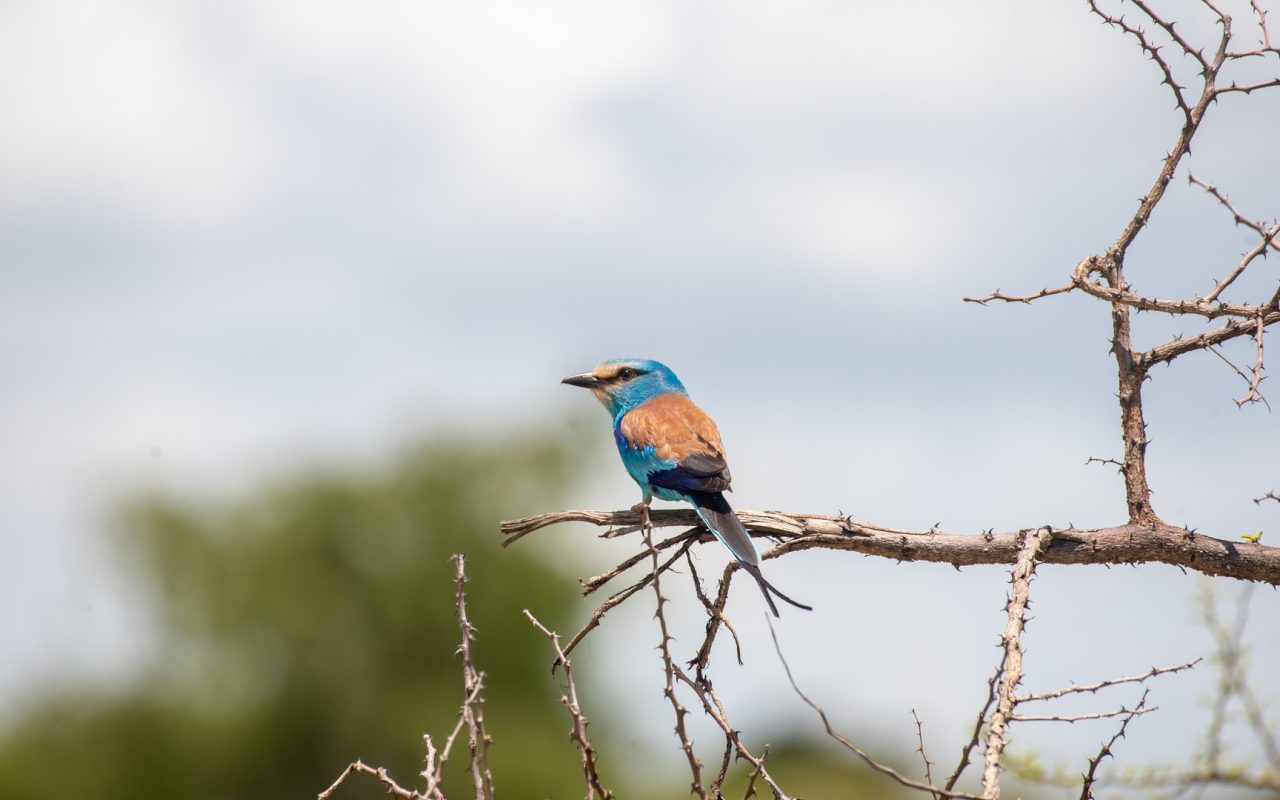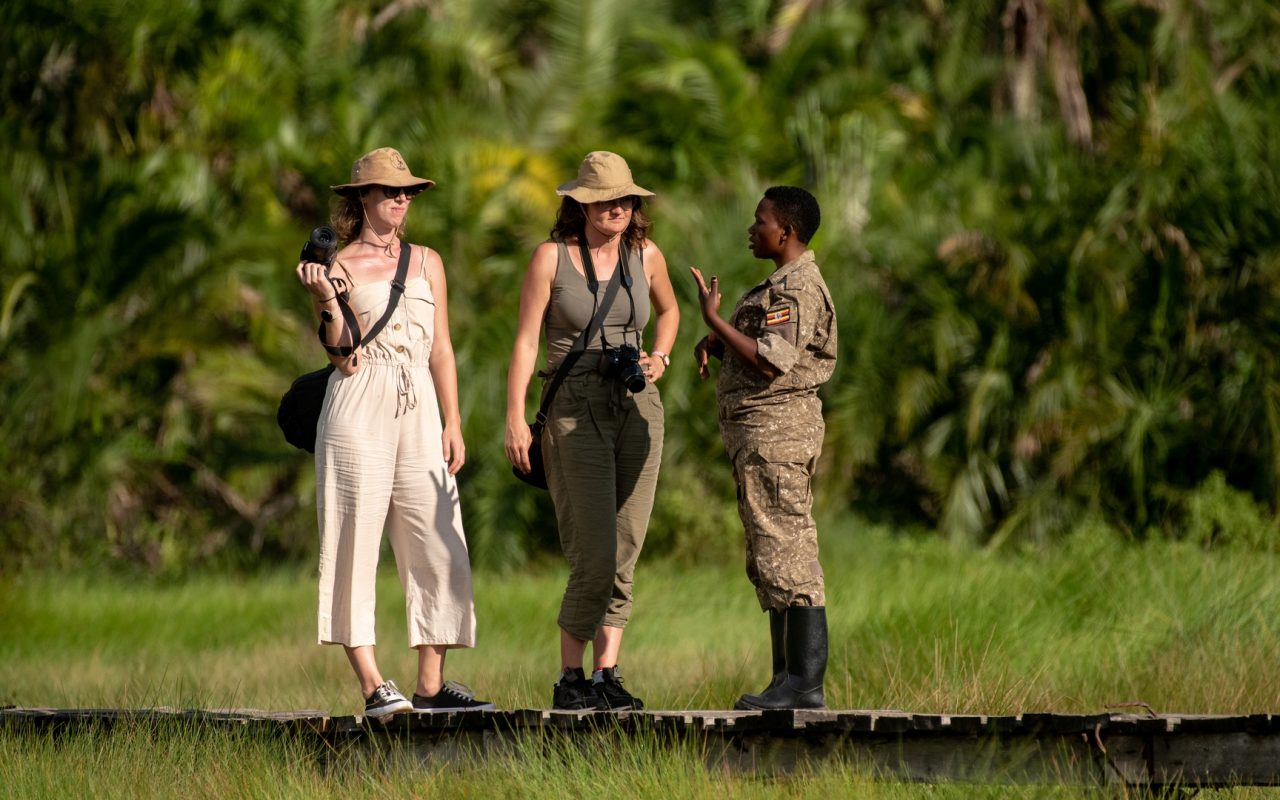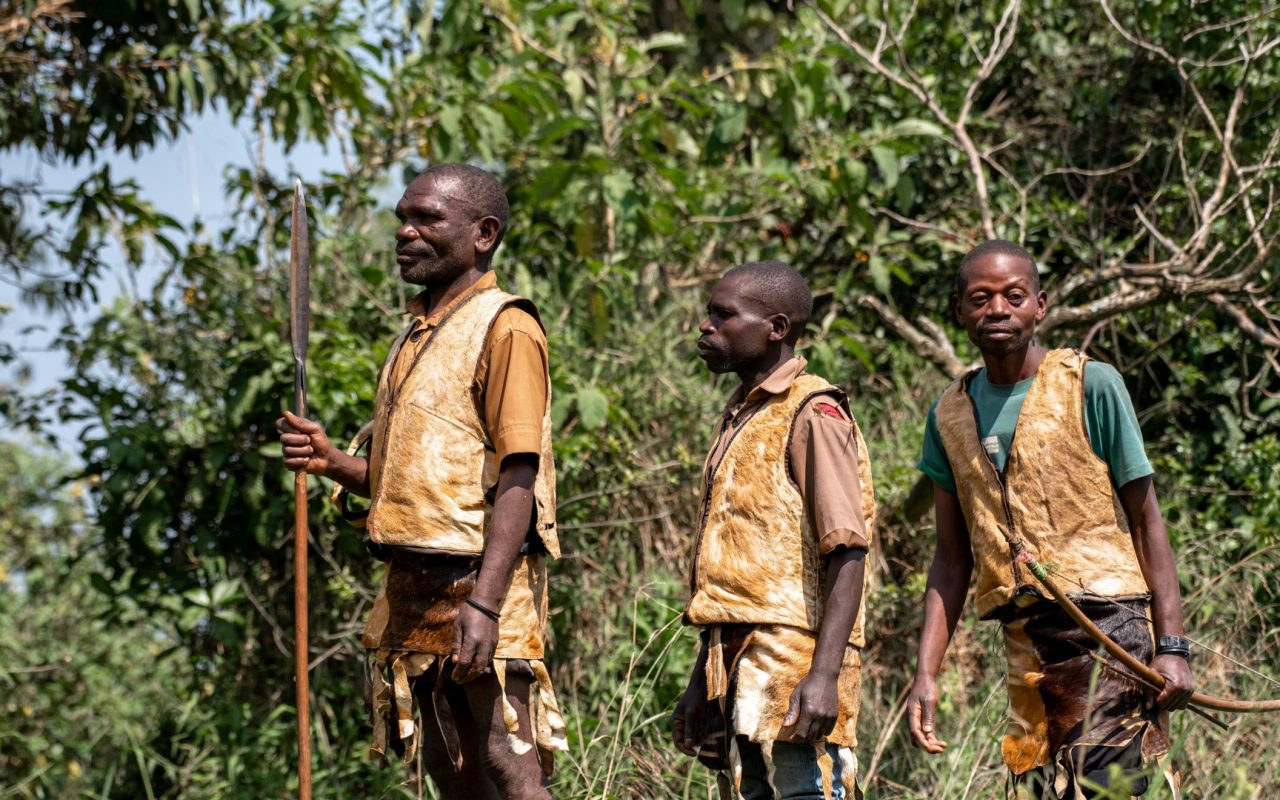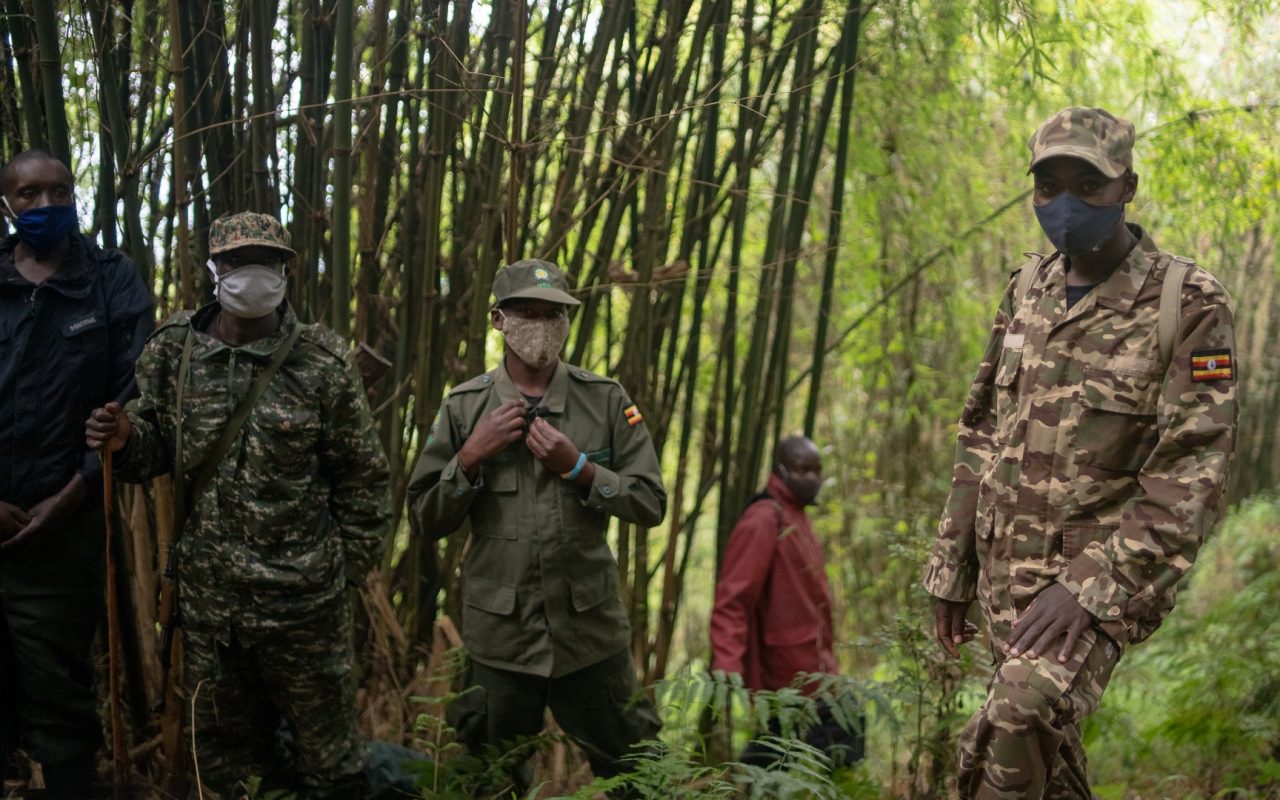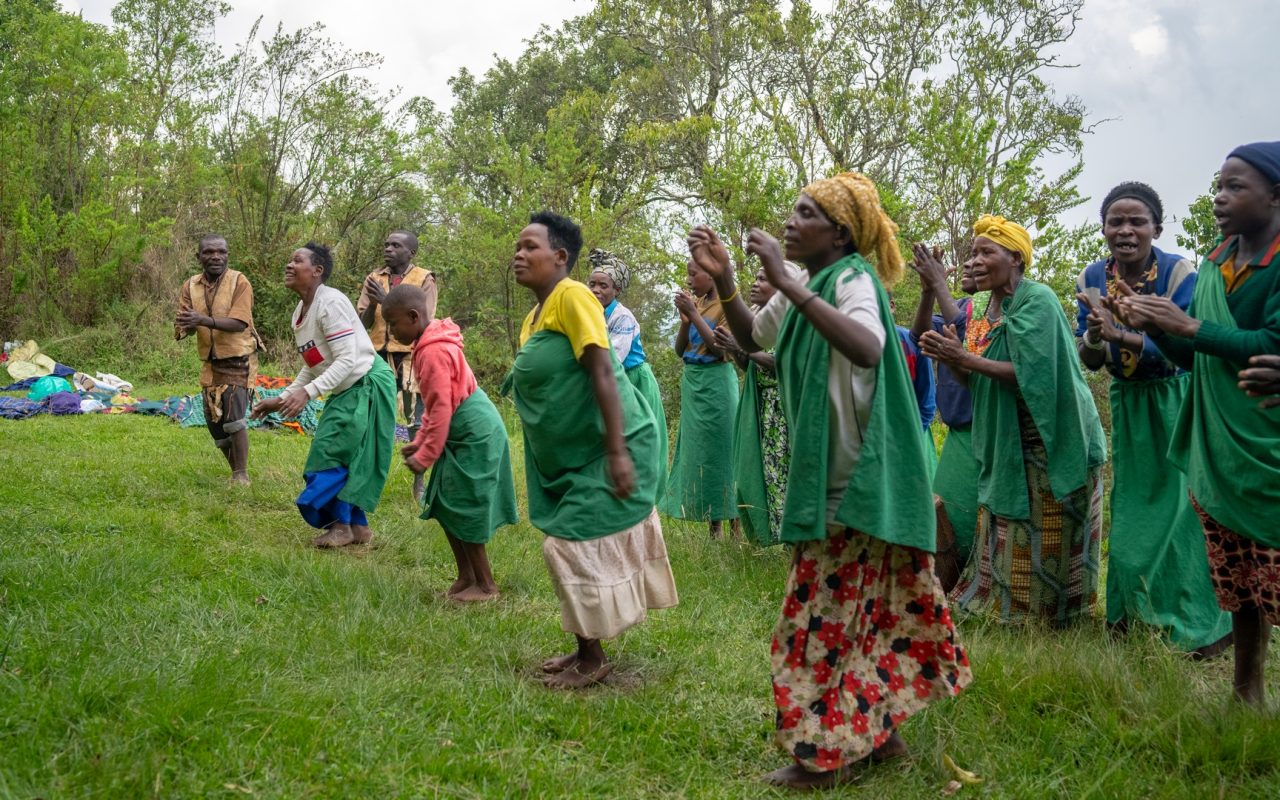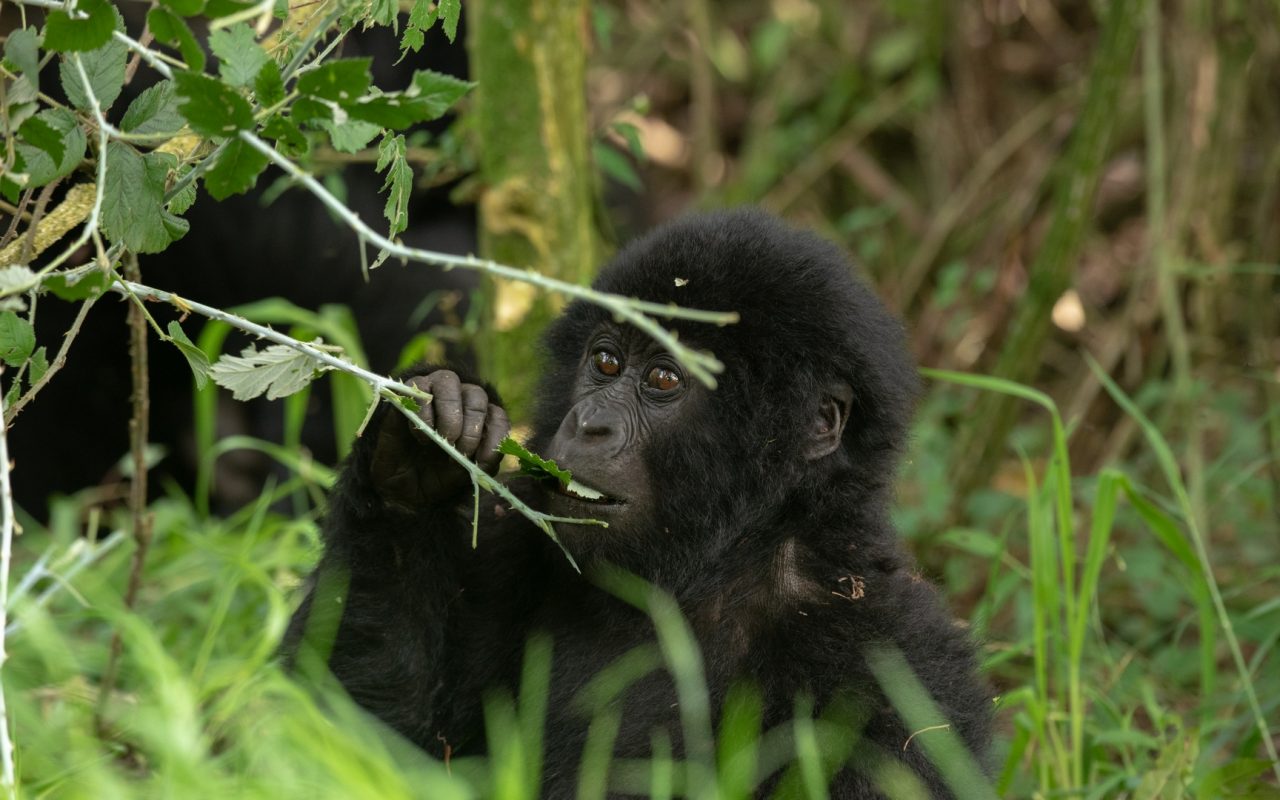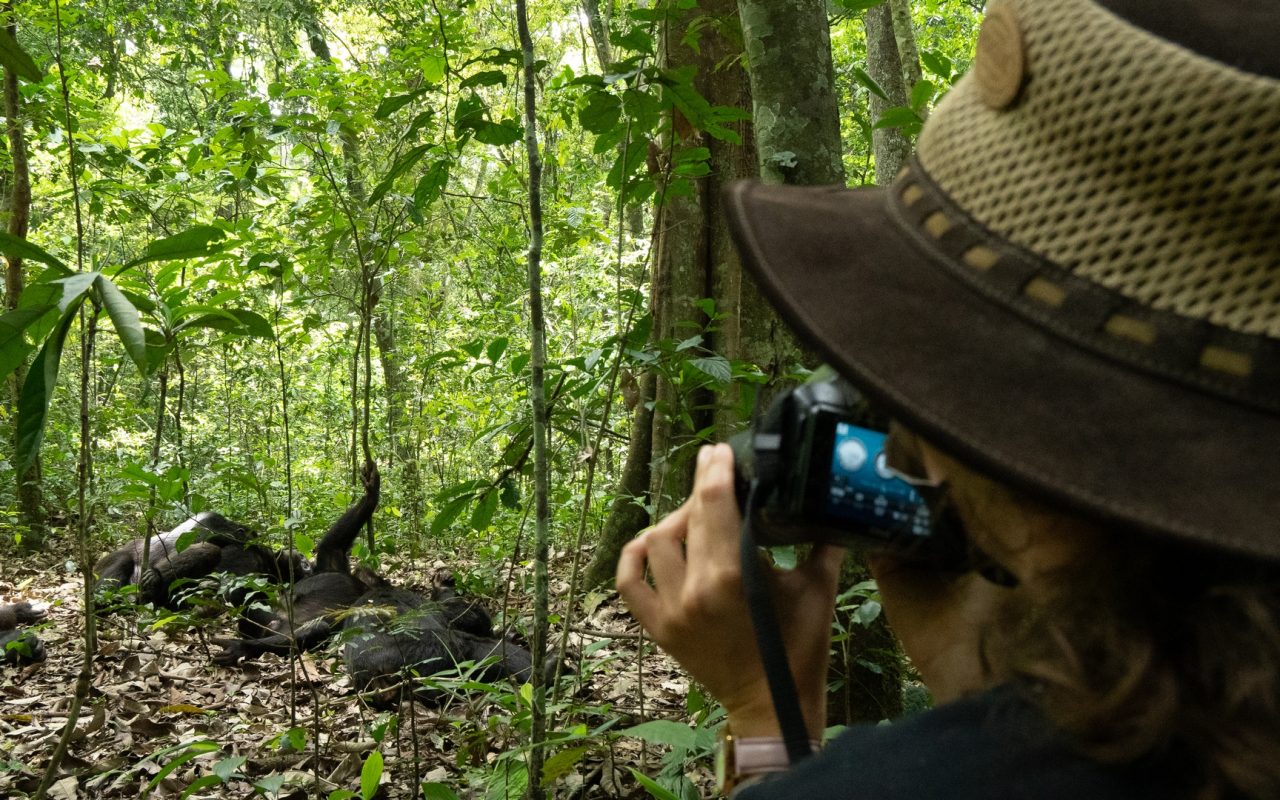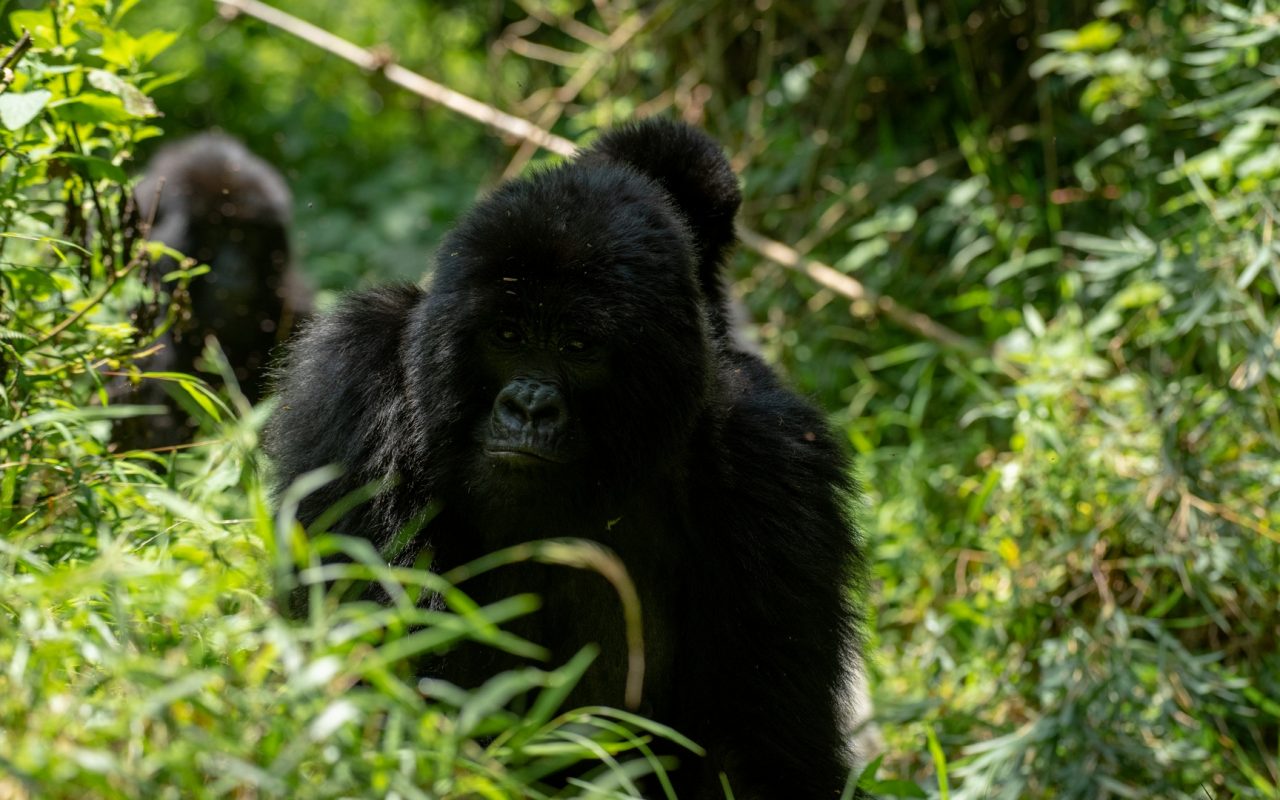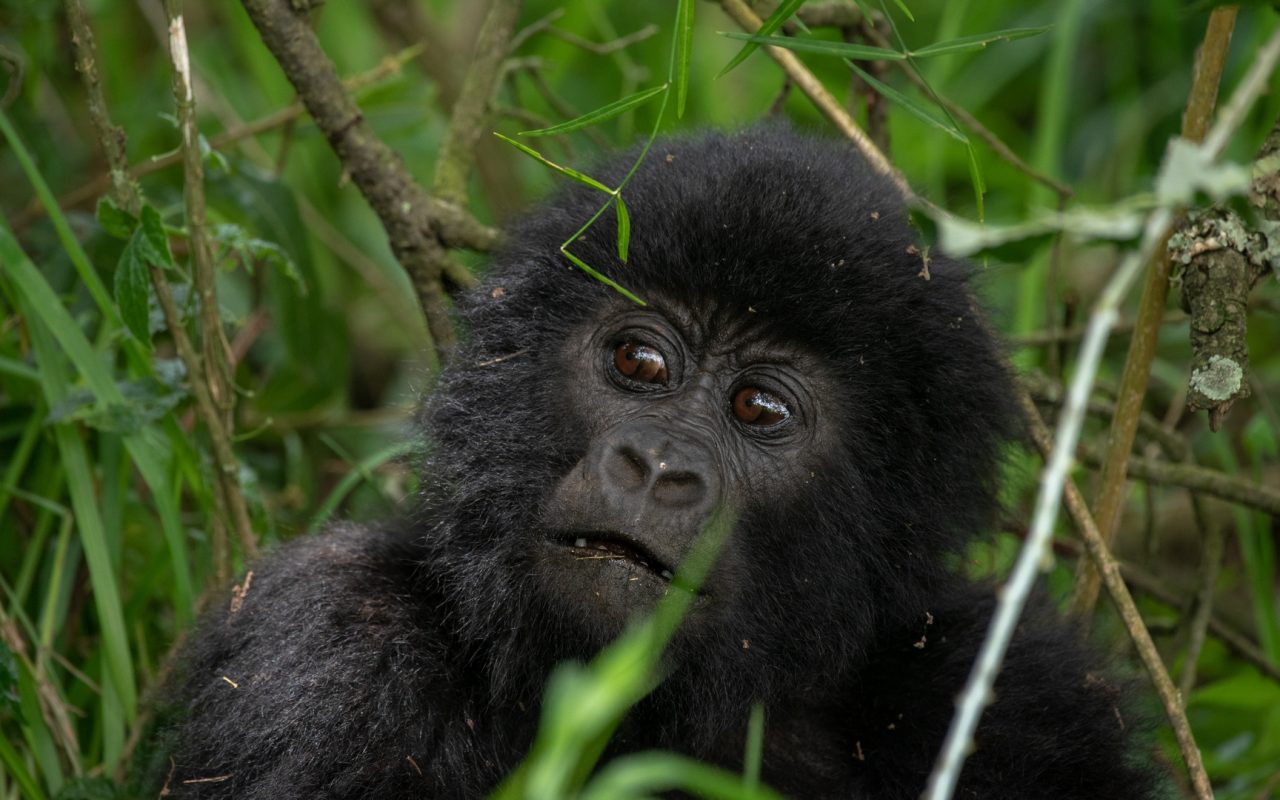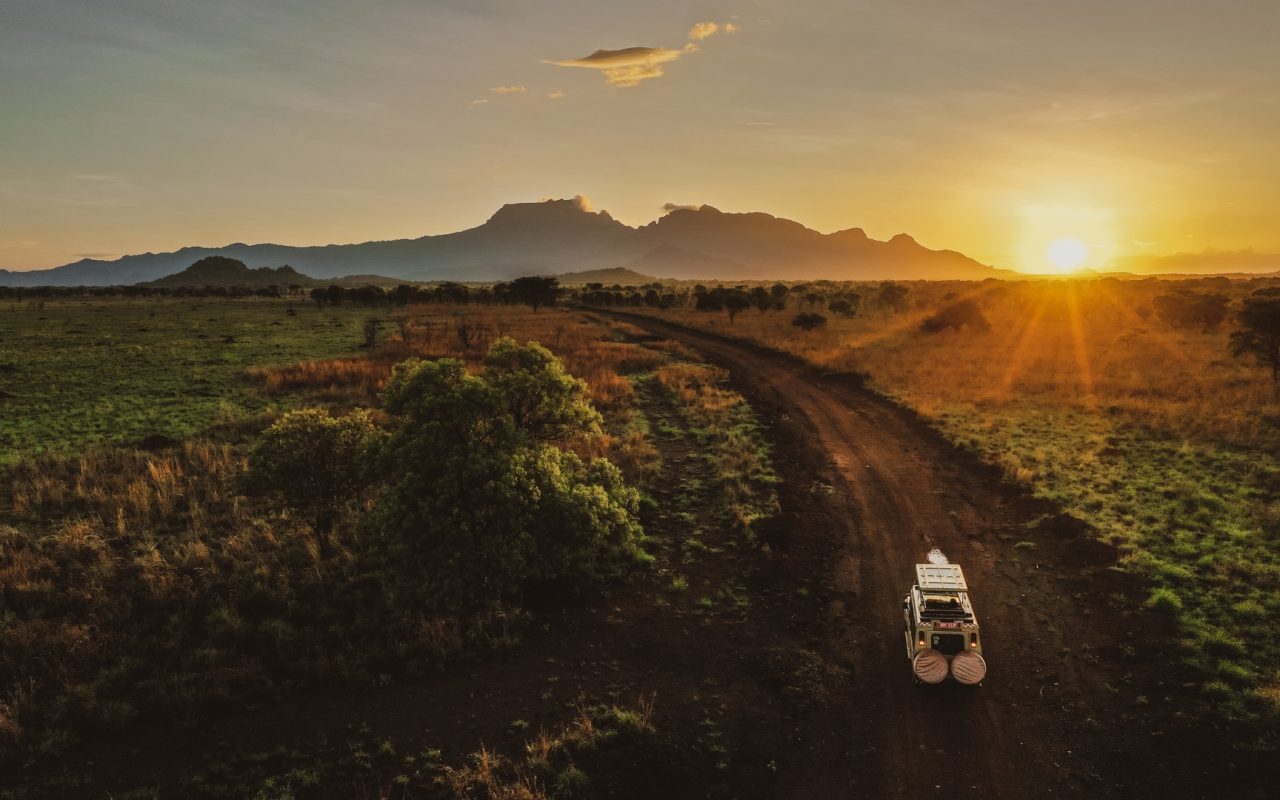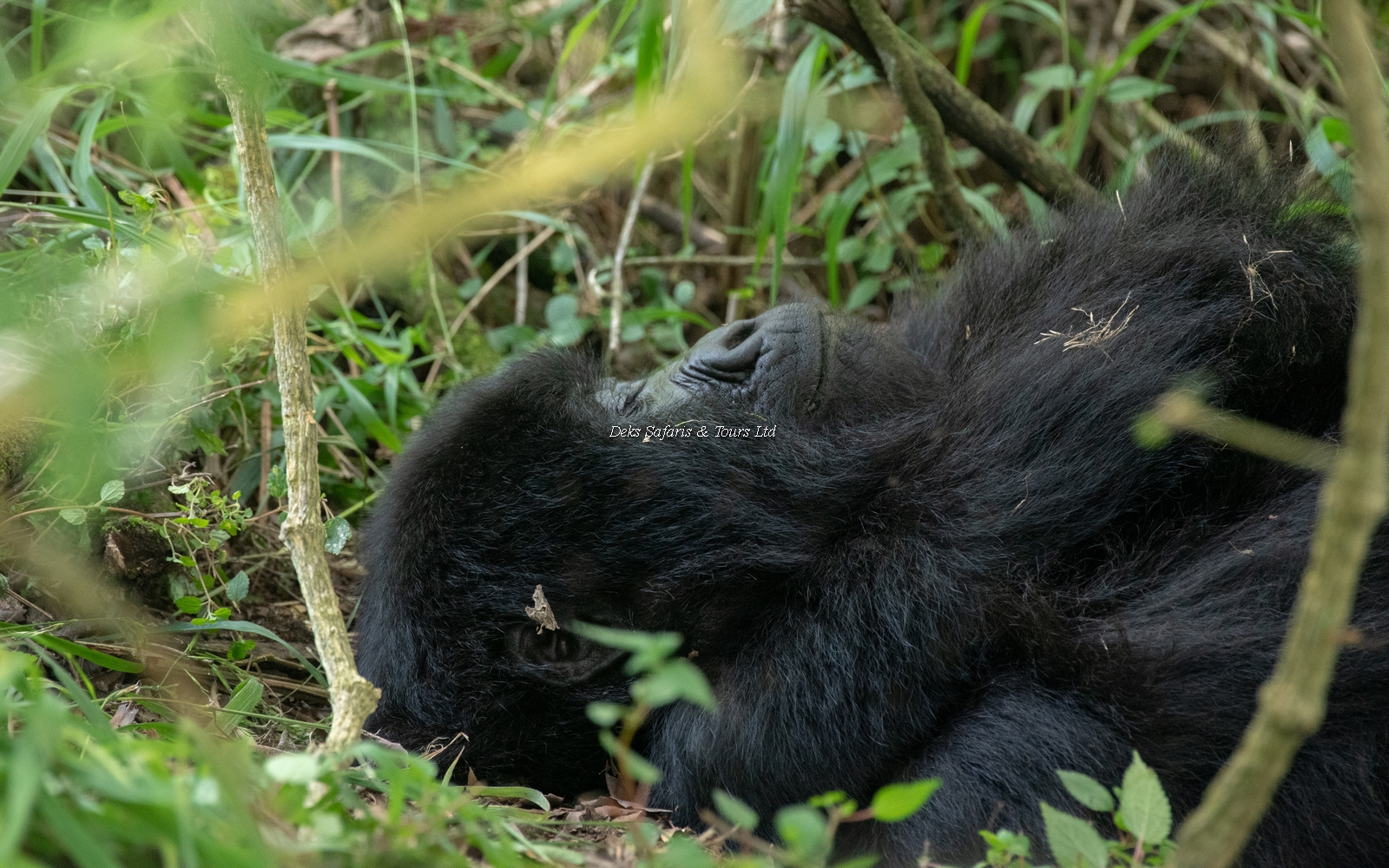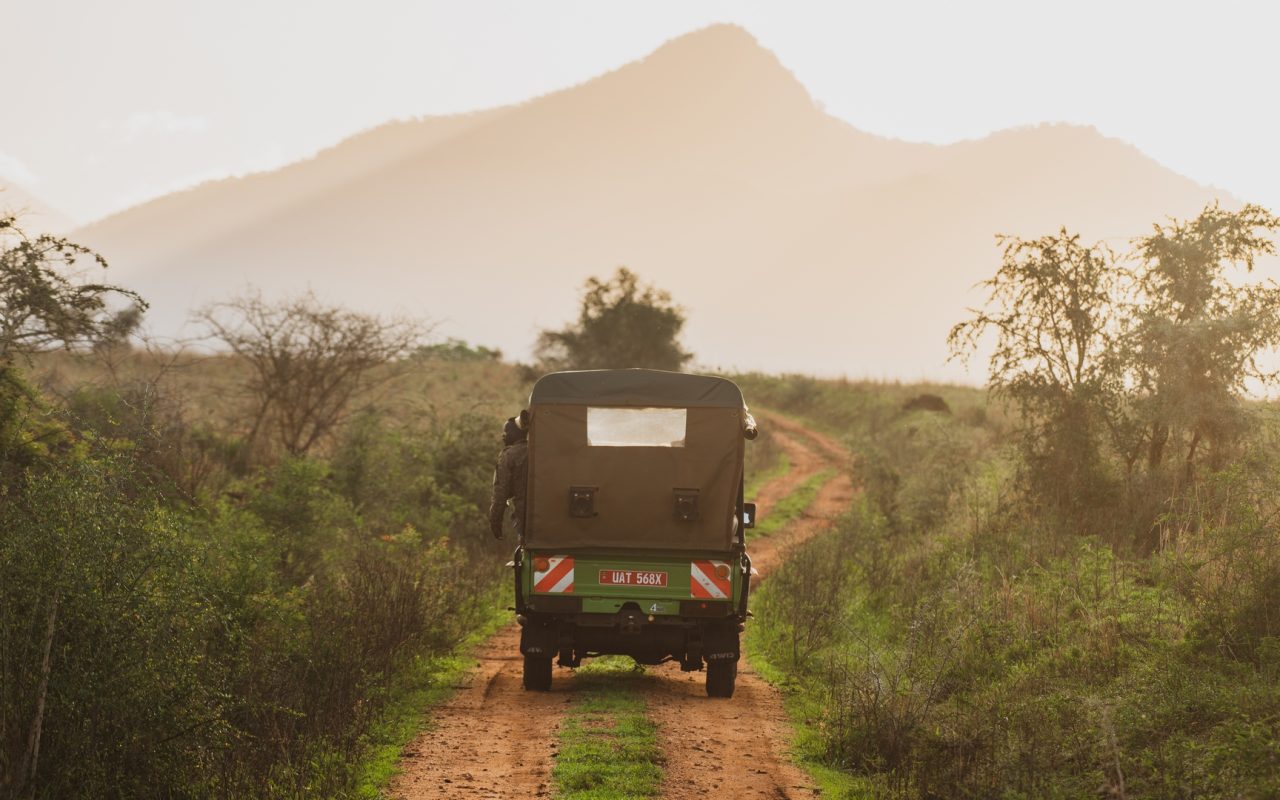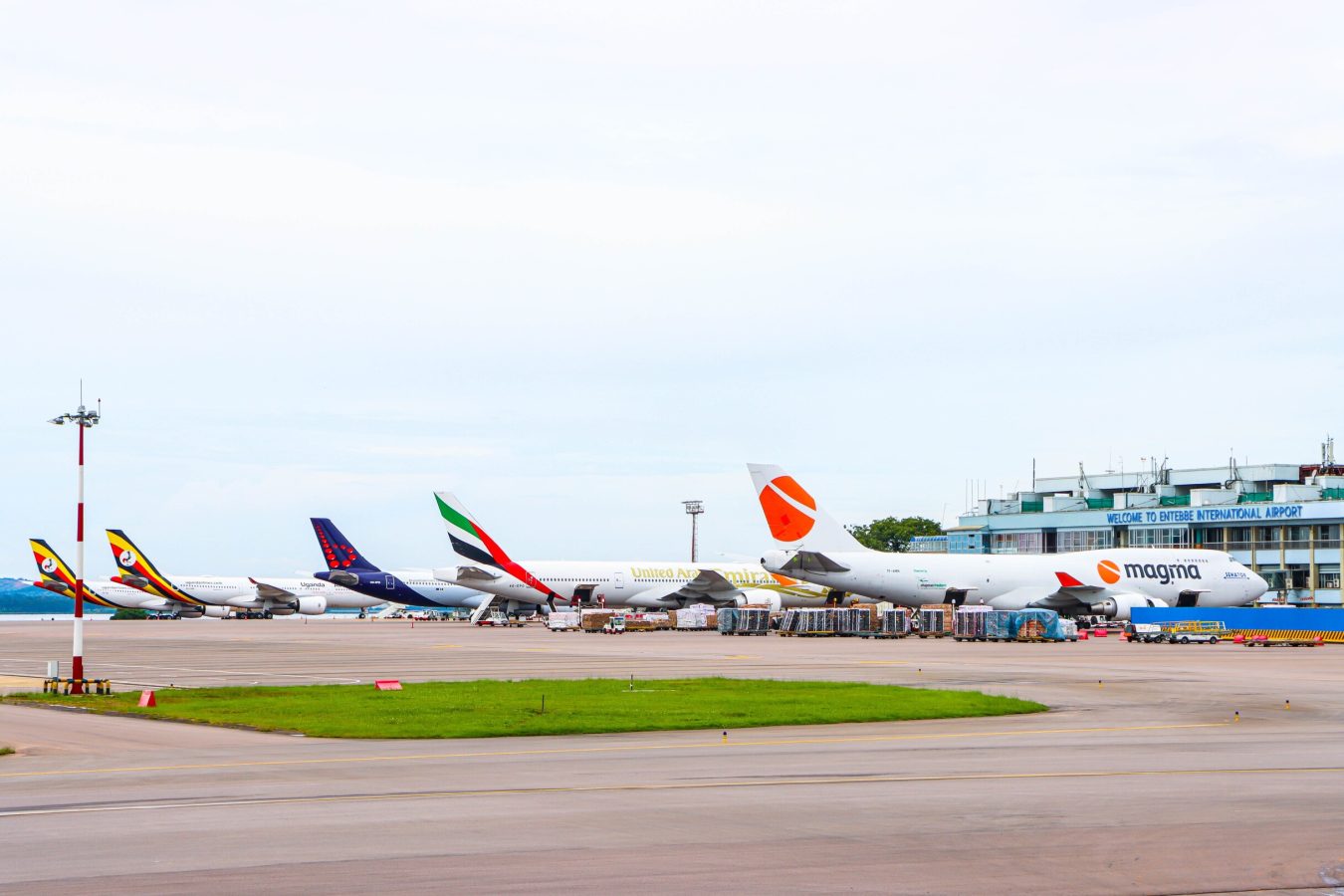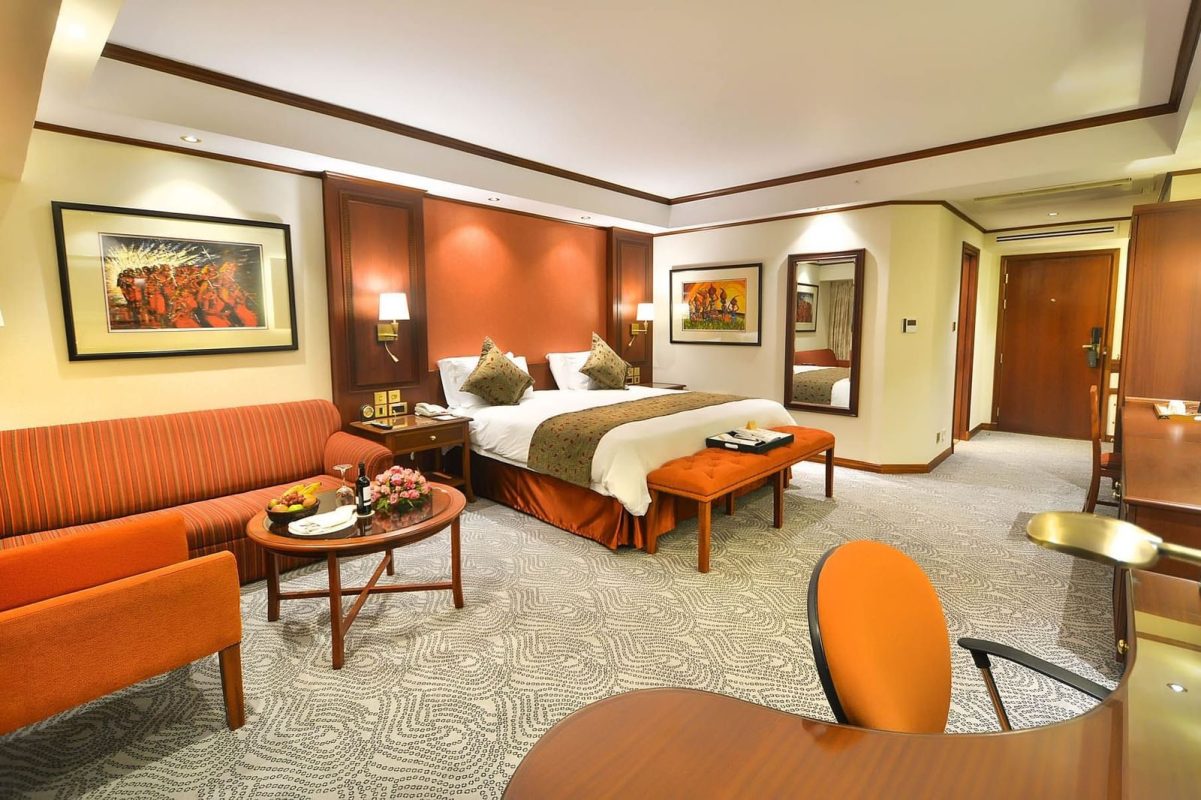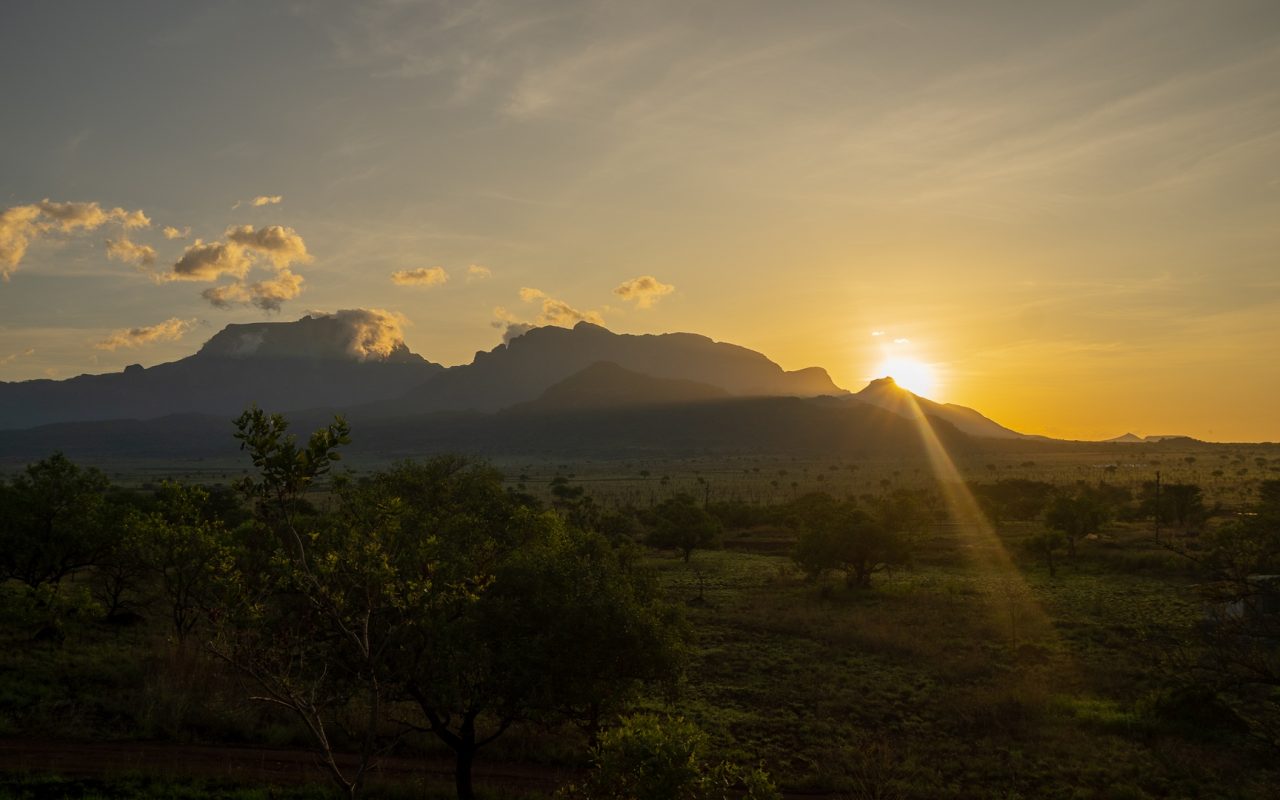Bwindi Impenetrable Forest – All You Need to Know Before You Go with Photos and Videos
Bwindi Impenetrable Forest – All You Need to Know Before You Go with Photos and Videos. This forest is a UNESCO World Heritage Site located in southwestern Uganda, East Africa. The forest is renowned for its exceptional biodiversity, with a particular emphasis on its population of endangered mountain gorillas.
The Bwindi Forest is not only a haven for wildlife enthusiasts but also a critical site for the conservation of endangered species, particularly the mountain gorillas. It provides a unique and unforgettable experience for those seeking to witness these majestic creatures in their natural habitat.
The Bwindi Impenetrable Forest is home to a diverse range of flora and fauna. It is one of the most biologically rich areas in Africa, with numerous species of birds, butterflies, reptiles, and mammals.
It is perhaps most famous for its population of mountain gorillas. It is estimated that about half of the world’s remaining mountain gorillas live in this forest. The gorillas in Bwindi have been habituated to human presence, allowing for gorilla trekking experiences.
Gorilla trekking is a popular activity in Bwindi, attracting tourists from around the world. Visitors can join guided treks into the forest to observe and interact with habituated gorilla groups. This experience is often described as a once-in-a-lifetime opportunity.
Location of Bwindi Impenetrable forest
Bwindi Impenetrable Forest is located in the southwestern part of Uganda, in East Africa. The forest spans across the districts of Kanungu, Kabale, and Kisoro. The geographical coordinates of Bwindi Impenetrable Forest are approximately between 1.0780° S latitude and 29.6474° E longitude.
The nearest major town to Bwindi is Kabale, which is approximately 50 kilometers (31 miles) to the south. Kisoro, another town in southwestern Uganda, is also close to the forest, particularly the Nkuringo sector of Bwindi.
Travelers typically access Bwindi from the town of Kabale or other nearby areas, and there are various entry points into the park, such as Buhoma, Ruhija, Rushaga, and Nkuringo, each offering different gorilla trekking experiences. The park’s remote location and challenging terrain contribute to its name, “Impenetrable,” emphasizing the dense and difficult-to-navigate nature of its vegetation.
What to Do in Bwindi Impenetrable forest?
Bwindi Impenetrable Forest offers a range of activities for visitors, with the highlight being gorilla trekking. Before engaging in any activities, it’s essential to check with Deks Tours Ltd for the most up-to-date information and to ensure that you have the necessary permits for gorilla trekking or any other specific activities.
Here are some things to do in Bwindi Impenetrable Forest:
- Gorilla Trekking
- Bird Watching
- Nature Walks and Hiking
- Cultural Encounters
- Visit Waterfalls and Scenic Spots
- Community Tours
- Batwa Trail Experience
- Butterfly Watching
- Photography
- Conservation Activities
Gorilla Trekking in Bwindi Impenetrable forest
Gorilla trekking in Bwindi Impenetrable Forest is a unique and awe-inspiring adventure, offering the opportunity to get up close and personal with one of the most endangered and majestic species on the planet, the mountain gorilla.
Mountain Gorilla trekking in Bwindi is a once-in-a-lifetime experience that allows you to witness these incredible creatures in their natural habitat while contributing to their conservation. It’s an adventure that combines the thrill of exploration with the responsibility of sustainable and ethical tourism.
Gorilla trekking permits are required and must be obtained in advance. Permits are limited to a certain number of visitors each day to minimize the impact on the gorillas and their habitat. It’s advisable to book permits well in advance as they are in high demand.
Physical fitness is important as trekking can be demanding, involving hiking through dense vegetation and sometimes steep terrain. Be prepared for varying weather conditions and bring appropriate clothing, sturdy hiking boots, and a daypack.
Bird Watching in Bwindi Impenetrable forest
Bwindi Impenetrable Forest is a paradise for bird watchers, boasting a rich diversity of bird species. The lush and varied habitats within the forest make it an excellent destination for bird watching enthusiasts.
Bwindi Impenetrable Forest provides a unique and rewarding bird watching experience, allowing enthusiasts to encounter a remarkable variety of bird species in a pristine and biodiverse environment.
The Bwindi forest is home to over 350 bird species, including both Albertine Rift endemics and other Central African bird species. Some of the notable birds include the African green broadbill, the Shelley’s crimsonwing, and the handsome francolin.
Joining a guided birding tour is recommended, as experienced bird guides are familiar with the forest’s avian residents and can help you identify and locate a wide range of species. These guides are often skilled in recognizing bird calls and can enhance your bird watching experience.
Different sectors of Bwindi offer unique birding opportunities. Buhoma, Ruhija, Rushaga, and Nkuringo are the four main sectors for gorilla trekking, and each has its own set of bird species. Depending on your interests, you may choose a specific sector or explore multiple sectors for a diverse birding experience.
Nature Walks and Hiking in Bwindi Impenetrable forest
Nature walks and hiking in Bwindi Impenetrable Forest offer an opportunity to explore the diverse ecosystems, scenic landscapes, and rich biodiversity of this UNESCO World Heritage Site. Nature walks and hiking in Bwindi provide a unique opportunity to immerse yourself in the natural wonders of the forest, offering a balance between adventure, education, and appreciation for the delicate ecosystems within this remarkable wilderness.
Consider taking guided nature walks led by experienced local guides. These guides are knowledgeable about the flora, fauna, and cultural aspects of the forest, providing valuable insights into the ecosystem.
Bwindi is characterized by steep hills, dense vegetation, and varied terrain. Be prepared for a mix of uphill and downhill hiking, as well as navigating through the dense undergrowth of the impenetrable forest.
Explore the incredible biodiversity of the forest, which is home to a wide variety of plant species, butterflies, birds, and other wildlife. Your guided walks may take you to different habitats, allowing you to appreciate the richness of the ecosystem.
Cultural Encounters in Bwindi Impenetrable forest
Engaging in cultural encounters in Bwindi Impenetrable Forest provides visitors with a deeper understanding of the local communities, their traditions, and the cultural significance of the forest. Cultural encounters in Bwindi not only add a layer of richness to your travel experience but also contribute to the sustainable development of local communities. By engaging with the local culture, you gain a deeper appreciation for the interconnectedness of the people and the environment in this unique part of the world.
The Batwa people are indigenous to the Bwindi region, and many still maintain a traditional way of life. Guided visits to Batwa communities offer a chance to interact with community members, learn about their history, customs, and traditional practices.
The Batwa Trail is a cultural experience that involves a guided walk with Batwa guides. During the trail, you’ll learn about the Batwa’s historical relationship with the forest, their hunting and gathering skills, and how they traditionally lived in harmony with the natural environment.
Cultural performances featuring traditional dances and music are often organized for visitors. These performances provide insight into the vibrant cultural heritage of the local communities. You may have the opportunity to participate in the dances and learn about the symbolic meaning behind them.
Community Tours in Bwindi Impenetrable forest
Community tours in Bwindi Impenetrable Forest provide visitors with the opportunity to engage with local communities, learn about their culture, and contribute to sustainable tourism initiatives. Community tours in Bwindi not only offer a chance to connect with the local culture but also play a vital role in promoting responsible and sustainable tourism, ensuring that the benefits of tourism extend to the communities surrounding the forest.
Guided community walks take visitors through local villages, allowing them to interact with community members, observe daily life, and learn about traditional practices. These walks often include visits to homes, schools, and community projects.
Educational tours may take visitors to local schools, giving them the chance to meet students, teachers, and administrators. These tours provide insights into the educational system, challenges faced by the community, and ongoing initiatives to improve education.
Some community tours include visits to health centers or clinics. This provides an opportunity to learn about local healthcare practices, the challenges faced by the community in terms of healthcare, and any ongoing health initiatives.
Batwa Trail Experience in Bwindi Impenetrable forest
The Batwa Trail Experience in Bwindi Impenetrable Forest is a cultural excursion that provides insight into the history, traditions, and way of life of the Batwa people, who are indigenous to the region. The Batwa, often referred to as “Pygmies,” were traditionally hunter-gatherers living in harmony with the forest. The Batwa Trail aims to share their cultural heritage and raise awareness about their historical connection to Bwindi Impenetrable Forest.
The Batwa Trail Experience not only offers a cultural journey but also contributes to the preservation of the Batwa heritage and supports community-led tourism initiatives. It provides a unique opportunity for visitors to appreciate the interconnectedness of culture and nature in the Bwindi Impenetrable Forest.
The Batwa Trail is typically a guided walk through the forest led by Batwa guides. These guides share their knowledge about the traditional uses of plants, their hunting and gathering techniques, and the cultural significance of the forest.
Along the trail, Batwa guides may demonstrate traditional practices such as hunting, gathering, and making tools from natural materials. These demonstrations offer a hands-on experience for visitors to understand the unique skills and lifestyle of the Batwa.
Batwa guides often share stories and folklore that have been passed down through generations. These narratives provide insights into their cultural beliefs, rituals, and the spiritual connection they have with the forest.
Butterfly Watching in Bwindi Impenetrable forest
Butterfly watching in Bwindi Impenetrable Forest is a delightful experience for nature enthusiasts. The forest is home to a diverse array of butterfly species, attracted by the rich floral diversity and the favorable habitat.
Butterfly watching in Bwindi Impenetrable Forest offers a serene and captivating experience, allowing you to immerse yourself in the beauty of these delicate creatures within the lush and biodiverse surroundings of the forest.
Bwindi Impenetrable Forest is known for its high biodiversity, and this extends to its butterfly population. The forest is home to numerous species with vibrant colors and intricate patterns.
Different parts of the forest may have varying butterfly populations. Your guides or local experts can lead you to known butterfly hotspots, ensuring a more fruitful and enjoyable butterfly-watching experience.
Consider joining guided butterfly walks led by knowledgeable guides or naturalists. These experts can help you identify different butterfly species, provide information about their behavior, and share interesting facts about the butterflies in Bwindi.
Photography in Bwindi Impenetrable forest
Photography in Bwindi Impenetrable Forest can be a rewarding experience, given the stunning landscapes, diverse wildlife, and unique cultural elements. Whether you’re capturing the soulful eyes of a mountain gorilla, the vibrant colors of a butterfly, or the cultural richness of the local communities, photography in Bwindi allows you to create lasting memories and share the beauty and importance of this remarkable natural and cultural landscape.
If you’re engaging in gorilla trekking, be sure to bring a camera with good low-light capabilities, as the forest can be dim in some areas. Avoid using a flash, as it may disturb the gorillas. Capture both wide-angle shots of the forest and close-up shots of the gorillas to tell a complete story.
Bwindi is home to a variety of wildlife, including birds, butterflies, and other mammals. Have a telephoto lens on hand for bird and wildlife photography. Be patient and observant to capture the unique behaviors of the fauna.
The lush and varied landscapes of Bwindi offer excellent opportunities for landscape photography. Capture the dense forests, mist-covered hills, and scenic viewpoints. Consider shooting during different times of the day to take advantage of changing lighting conditions.
Why is Bwindi Forest Called Impenetrable?
Bwindi Impenetrable Forest is named for its thick vegetation and challenging terrain, which make it difficult to traverse. The term “impenetrable” accurately describes the dense and tangled nature of the forest, creating a challenging environment for movement and exploration.
The impenetrability of Bwindi Forest has played a crucial role in its conservation by limiting human impact and preserving the natural habitat for the diverse flora and fauna. The forest’s designation as a UNESCO World Heritage Site and its importance for the conservation of mountain gorillas highlight the need to protect this unique and challenging ecosystem.
The forest is characterized by dense vegetation, including tall trees, shrubs, and thick undergrowth. The vegetation is so thick that it can be challenging to create clear paths or navigate without established trails.
Tangled vines, creepers, and thick foliage contribute to the impenetrability of the forest. The intertwined vegetation creates a maze-like structure, making it difficult for people to move through the forest without the aid of established trails.
What Animals Are In The Bwindi Impenetrable Forest?
Bwindi Impenetrable Forest is renowned for its rich biodiversity, housing a diverse array of plant and animal species. The forest is particularly famous for being a habitat for the endangered mountain gorillas, but it is also home to numerous other mammals, birds, reptiles, and insects.
Bwindi Impenetrable Forest’s status as a UNESCO World Heritage Site is a testament to its ecological importance and the need for conservation efforts to protect its unique and endangered species. Visitors to Bwindi can experience the beauty of this natural wonder while contributing to its preservation through responsible tourism practices.
- Mountain Gorillas (Gorilla beringei beringei)
- Colobus Monkeys
- Forest Elephants (Loxodonta cyclotis)
- Forest Duikers
How Long Is It From Kampala To Bwindi Impenetrable National Park?
The travel time from Kampala to Bwindi Impenetrable National Park can vary depending on the specific starting point in Kampala and the chosen route. The distance between Kampala, the capital city of Uganda, and Bwindi is approximately 400 kilometers (about 248 miles) by road. The journey typically takes several hours due to the terrain and road conditions.
It’s important to plan ahead and consider the mode of transportation that aligns with your preferences and schedule. Additionally, road conditions, weather, and other factors may influence travel times, so it’s advisable to check with Deks Tours Ltd for the most accurate and up-to-date information.
By Road
The journey by road can take around 8 to 10 hours, depending on the route taken, traffic conditions, and the specific location within Kampala. The road trip involves navigating through diverse landscapes, including urban areas, highways, and eventually, more rural and hilly terrains as you approach Bwindi.
By Air
Some visitors opt for domestic flights from Entebbe International Airport (EBB) or Kajjansi Airfield to nearby airstrips, such as Kihihi or Kisoro, which are close to Bwindi. Flying significantly reduces travel time, but it’s important to note that flight availability and schedules may vary.
What Is The Unique Selling Point Of Bwindi Impenetrable National Park?
Bwindi Impenetrable National Park’s unique selling points lie in its exceptional biodiversity, cultural significance, and the opportunity it provides for visitors to engage in unforgettable experiences.
Bwindi Impenetrable National Park’s unique combination of biodiversity, cultural experiences, and conservation success makes it a globally significant destination, drawing visitors seeking an immersive and impactful encounter with nature and wildlife.
Bwindi is renowned for its significant population of mountain gorillas, an endangered species. The park is home to about half of the world’s remaining mountain gorilla population. Gorilla trekking in Bwindi offers a rare and intimate encounter with these remarkable primates, providing a unique selling point for the park.
Cultural Heritage – Batwa People
The presence of the Batwa people, who are indigenous to the region, adds a cultural dimension to Bwindi. Cultural experiences, such as the Batwa Trail, allow visitors to learn about the traditional lifestyle, customs, and cultural significance of the Batwa people.
Birding Paradise: Bwindi is a haven for bird watchers, with over 350 bird species recorded, including numerous Albertine Rift endemics. The park’s diverse habitats, ranging from montane forests to swampy areas, make it an excellent destination for birding enthusiasts.
How to Get to Bwindi Impenetrable Forest?
Getting to Bwindi Impenetrable Forest involves travel by road or air, depending on your preferences, budget, and time constraints. Bwindi is located in southwestern Uganda, and the main gateway is often through the town of Kisoro or the Buhoma sector near the town of Bwindi.
Whether you choose to travel by road or air, planning ahead and coordinating with Deks Tours Ltd will contribute to a smoother and more enjoyable journey to Bwindi Impenetrable Forest.
By Road
From Kampala
The most common route by road is from Kampala, the capital of Uganda. The journey takes approximately 8 to 10 hours, depending on the specific location in Kampala, traffic conditions, and the route taken.
The road trip involves driving southwest towards Kabale and then proceeding to Bwindi. The journey includes both paved and unpaved roads, passing through rural landscapes and hilly terrains.
From Kigali (Rwanda)
Another option is to travel from Kigali, the capital of Rwanda. The journey takes about 4 to 5 hours by road. Cross the border at Cyanika or Gatuna and proceed to Bwindi. This route is shorter than the one from Kampala.
By Air:
Fly to Kihihi or Kisoro Airstrips:
-
- Domestic flights from Entebbe International Airport or Kajjansi Airfield can take you to airstrips near Bwindi, such as Kihihi or Kisoro. Flying significantly reduces travel time.
- After landing, ground transportation can be arranged to take you from the airstrip to your accommodation in Bwind
Charter Flights:
-
-
- Deks Tours Ltd offers charter flights directly to airstrips near Bwindi. This option provides a convenient and efficient way to reach the park, especially for those with time constraints.
-
Where to Stay in Bwindi Impenetrable Forest?
Bwindi Impenetrable Forest offers a range of accommodation options to suit different preferences and budgets. The lodges and camps in and around the park cater to visitors seeking comfortable stays with easy access to gorilla trekking and other activities. Bwindi Impenetrable Forest offers a unique and immersive experience, and your choice of accommodation can enhance your overall stay in this extraordinary natural setting.
Here are some recommended areas and accommodation options in Bwindi:
Buhoma Sector: The Buhoma sector is one of the main entry points to Bwindi Impenetrable Forest and offers a variety of accommodation options. It is located near the town of Bwindi and is well-known for gorilla trekking.
Accommodation in Buhoma
- Buhoma Lodge
- Mahogany Springs
- Bwindi Lodge
- Gorilla Safari Lodge
Ruhija Sector: The Ruhija sector is another gorilla trekking area in Bwindi, offering a quieter and less crowded experience compared to Buhoma.
Accommodation in Ruhija
- Ruhija Gorilla Lodge
- Kiho Gorilla Safari Lodge
- Rushaga Gorilla Camp
- Nkuringo Sector: The Nkuringo sector is known for its stunning views of the Virunga Volcanoes and is an excellent location for gorilla trekking.
Accommodation in Nkuringo
- Clouds Mountain Gorilla Lodge
- Nkuringo Bwindi Gorilla Lodge
- Bwindi Surrounding Areas: There are also accommodation options in the areas surrounding Bwindi, providing a base for exploring the forest.
Accommodation in Surrounding Areas
- Silverback Lodge (Buhoma)
- Engagi Lodge (Buhoma)
Best Time to Visit Bwindi Impenetrable Forest
The best time to visit Bwindi Impenetrable Forest depends on your preferences and the specific activities you plan to undertake, such as gorilla trekking, bird watching, or hiking. Bwindi has a tropical climate, but the temperatures can vary with changes in elevation.
Ultimately, the best time to visit Bwindi Impenetrable Forest depends on your priorities and tolerance for different weather conditions. Whether you prefer the lush landscapes of the wet season or the clearer trails of the dry season, Bwindi offers a unique and enchanting experience year-round.
Dry Season (June to September and December to February)
- Gorilla Trekking: Dry seasons are generally considered the best times for gorilla trekking. The trails are less muddy, making trekking more comfortable, and the gorillas may be easier to spot as they move around.
- Bird Watching: The dry season is excellent for bird watching as well, with clearer skies and better visibility.
Wet Season (March to May and October to November)
- Lush Vegetation: The wet season brings lush greenery to the forest, making it a scenic time to visit.
- Fewer Tourists: There may be fewer tourists during the wet season, leading to a more tranquil experience.
Shoulder Seasons: Late September to October and Late February to March
- Balanced Conditions: These months may offer a balance between the dry and wet seasons, with moderate temperatures and manageable rainfall.
- Availability: While there might be some demand for gorilla trekking permits, it may be less than during the peak dry season.
Luxury Africa Tours & Holidays – Deks Safaris and Tours Ltd
- 6 Days Uganda Adventure Tour
- 6 Days Uganda Safari
- 7 Days Uganda Safari
- 7 Days Uganda Tour
- 8 Days Uganda Safari
- 8 Days Uganda Tour
- 9 Days Uganda Safari
- 9 Days Uganda Tour
- 9 Days Uganda Wildlife Tour
- 15 Days Uganda Cycling Tour
- 15 Days Best of Uganda Safari
- 15 Days Ultimate Uganda Safari
- 21 Days Around Uganda Safari
- 21 Days Uganda Safari

